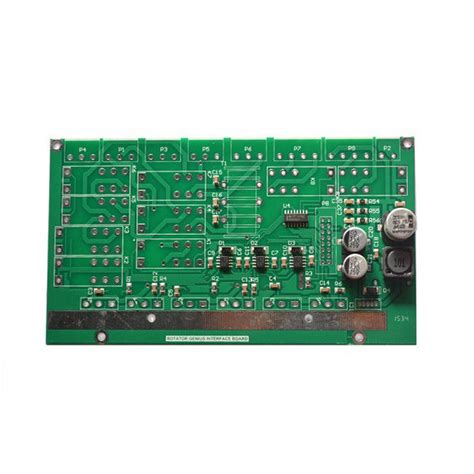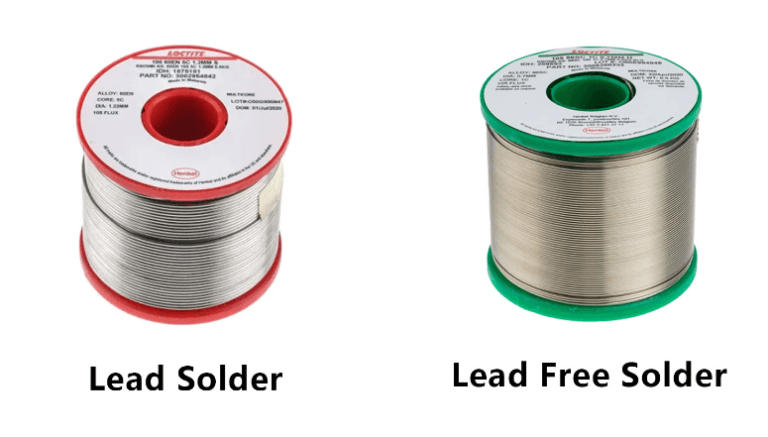Streamlining PWB Assembly Processes to Boost Production Outcomes
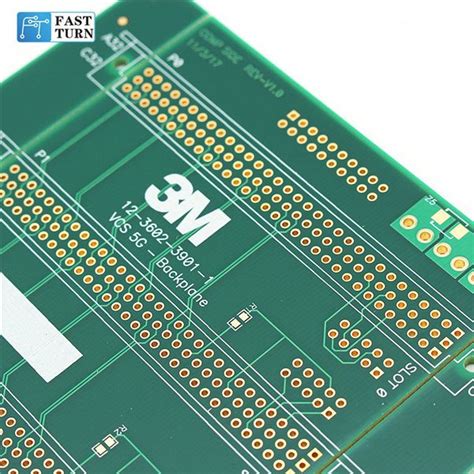
Key Takeaways
In order to effectively enhance pcb assembly processes, several key insights can be drawn from current practices within the industry. First, it is crucial to recognize that pcba plays a significant role in the overall efficiency and reliability of electronic devices. By understanding the basics of PWB assembly, manufacturers can identify areas for improvement and innovation. Key challenges, such as managing complex supply chains and adapting to rapid technological advancements, must be addressed with strategic planning and implementation of new methodologies.
Innovative techniques for enhancing efficiency include adopting modular designs, which allow for greater flexibility during both production and assembly phases. Embracing automation is another vital step; it not only reduces the chances of human error but also accelerates production timelines significantly. As one industry expert advises, "> Staying ahead in technology adoption is not only beneficial; it’s essential for remaining competitive."
Furthermore, ensuring rigorous quality control measures are in place is paramount—these practices help mitigate defects that could impact the final product’s performance. By implementing lean manufacturing principles, organizations can streamline their operations, reduce waste, and optimize resource allocation. It’s also advisable to analyze operational data consistently, as this supports a culture of continuous improvement within PWB assembly processes.
In summary, staying proactive and adaptable in the evolving landscape of pcb assembly will result in enhanced productivity and quality outcomes. With these strategies in mind, manufacturers can position themselves for ongoing success in a highly competitive field.

Understanding the Basics of PWB Assembly
The PWB assembly process, also known as PCB assembly or PCBA, is a critical step in the production of electronic devices. This process involves assembling electronic components onto a printed wiring board, ensuring that they are securely attached and functioning correctly. Understanding the fundamentals of this process requires familiarity with both the materials and methods involved.
At its core, PWB assembly encompasses various techniques that contribute to precision and efficiency. Key components include surface mount technology (SMT) and through-hole technology, each with its own advantages depending on the product requirements. For instance, SMT allows for a denser layout and is often preferred for high-speed manufacturing due to its speed and reduced size. In contrast, through-hole components provide greater durability in certain applications.
Table: Comparison of PWB Assembly Techniques
| Technique | Advantages | Disadvantages |
|---|---|---|
| Surface Mount Technology (SMT) | High density of components, faster assembly | Can be difficult to repair; sensitive to heat |
| Through-Hole Technology | Strong mechanical connections | Takes up more space; slower assembly time |
In addition to these methods, one must also be aware of the essential materials used in PWB assembly. The choice of substrate, solder paste, and other materials can significantly impact the overall quality and reliability of the final product. Proper handling and correct application techniques are critical for achieving optimal results.
Moreover, as electronics become more complex, understanding how to manage these intricate processes efficiently is crucial for maximizing productivity in manufacturing environments. Familiarity with both foundational concepts and emerging technologies will empower manufacturers to enhance their pcb assembly practices and ultimately contribute to improved production outcomes.

Key Challenges in PWB Assembly Processes
In the fast-paced arena of PWB assembly, companies often encounter several challenges that can hinder production efficiency. One major obstacle is the complexity of modern designs, which frequently involve high-density interconnections and a variety of materials that can complicate the pcb assembly process. This complexity requires skilled technicians who are well-versed in both pcba techniques and the various components involved. Additionally, maintaining consistent quality across different batches can be difficult, especially when dealing with varying supplier standards and component reliability. Another critical challenge is managing lead times; delays in component delivery can disrupt assembly schedules and lead to increased labor costs. Moreover, integrating new technologies while minimizing operational disruptions can be a fine balancing act for manufacturers aiming to remain competitive. To navigate these barriers effectively, companies must focus on developing robust training programs that enhance workforce skills and implement stringent quality control measures to ensure that every step of the PWB assembly process meets industry standards. As such, addressing these challenges head-on is crucial for improving overall production outcomes and maintaining a competitive edge in the electronics manufacturing landscape.
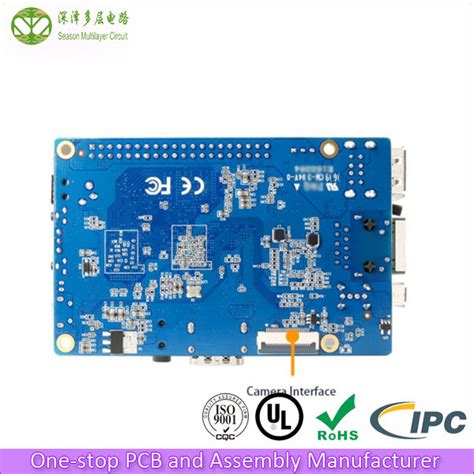
Innovative Techniques for Enhancing Efficiency
Efficiency in PWB assembly is crucial for optimizing production outcomes in the fast-paced world of electronics manufacturing. Implementing innovative techniques can significantly streamline the pcb assembly process and improve the overall productivity of manufacturing operations. One such technique is the adoption of automated assembly processes, which can minimize human error and significantly reduce production time. Using advanced machinery for tasks like soldering and component placement can ensure greater precision and uniformity in pcba outcomes. Additionally, integrating real-time monitoring systems can provide valuable data on operational performance, allowing manufacturers to identify bottlenecks quickly and resolve them proactively. Another strategy involves the use of modular assembly techniques, which facilitate a more flexible approach to production by allowing different parts of a PWB assembly to be constructed independently before integration. This not only enhances workflow but also accommodates changes in design or volume demand with ease. Finally, adopting digital tools for managing inventories and forecasting demand can lead to improved resource allocation and reduced waste, further enhancing efficiency in the overall pcb assembly process. By focusing on these innovative strategies, manufacturers can realize significant gains in productivity while maintaining high-quality standards in their pcba operations.
The Role of Automation in PWB Production
Automation plays a pivotal role in enhancing the PWB assembly processes, significantly impacting the overall efficiency and reliability of pcb assembly. By integrating automated systems, manufacturers can streamline repetitive tasks, thereby reducing human error and increasing production speed. Technologies such as robotic arms and automated optical inspection (AOI) allow for precise handling and monitoring of printed circuit boards (PCBs) during assembly. This not only ensures consistency in quality but also facilitates the rapid adaptation to various production demands. Furthermore, automation contributes to more effective resource management, optimizing the use of materials and minimizing waste during the pcba process. As manufacturers embrace these innovations, they can expect to see improved productivity outcomes while maintaining high standards for quality control. In essence, as automation continues to evolve within PWB assembly, it not only enhances operational efficiencies but also positions companies for competitive advantages in the ever-evolving electronics market.
Best Practices for Quality Control in PWB Assembly
Quality control in PWB assembly is crucial to ensure the reliability and functionality of electronic products. Implementing systematic inspection protocols at various stages of the pcb assembly process helps identify defects early on, leading to reduced waste and rework. Effective PCBA quality control measures include established criteria for visual inspections, automated testing systems, and functional verification methods that focus on both components and assembly integrity. Utilizing specialized tools such as X-ray inspection for solder joints provides deeper insights into the hidden layers of PWB assembly, ensuring every aspect meets industry standards. Furthermore, fostering a culture of quality within teams encourages proactive engagement with processes, allowing workers to take ownership of their roles in maintaining product excellence. Continuous training and development empower staff to integrate best practices seamlessly into their work routine, enhancing not just product quality but also overall operational efficiency. In this way, a robust quality control framework not only upholds standards but also drives innovation in pcb assembly, ultimately leading to superior production outcomes.
Implementing Lean Manufacturing Principles
In the realm of pwb assembly, the adoption of Lean Manufacturing Principles can significantly transform production processes. These principles focus on minimizing waste without sacrificing productivity, thereby enhancing overall efficiency. One fundamental aspect is identifying and eliminating non-value-added activities within the pcba (printed circuit board assembly) workflow. By scrutinizing each stage of the assembly process, manufacturers can streamline operations, reduce cycle times, and optimize resource allocation. Moreover, incorporating visual management tools such as kanban boards can foster better communication among team members and ensure that material flow is managed effectively. Implementing continuous improvement through regular feedback loops empowers employees to contribute to process enhancements actively. Such initiatives may include cross-training personnel to adapt to various roles within pwb assembly, which not only increases flexibility but also boosts team morale. Ultimately, embracing these Lean principles can pave the way for superior productivity outcomes in electronics manufacturing while maintaining high standards of quality control across all aspects of pcba operations.
Analyzing Data for Continuous Improvement
In today’s competitive landscape of pcb assembly and pcba manufacturing, leveraging data analytics is paramount for driving continuous improvement. By systematically collecting and analyzing data from various stages of the PWB assembly process, manufacturers can identify inefficiencies and pinpoint areas needing enhancement. Utilizing advanced analytics tools allows for real-time monitoring of production metrics, which facilitates proactive adjustments to workflows and processes. Data-driven decision-making enables manufacturers to assess the impact of implemented changes, ensuring that they are on a path toward greater efficiency and productivity. Furthermore, regular performance reviews supported by data analysis can uncover trends that lead to innovative solutions for persistent issues. Ultimately, embracing a culture of data-centric improvement not only elevates the quality of products but also cultivates a more agile and responsive manufacturing environment, directly influencing overall production outcomes in the competitive world of electronics manufacturing.
Future Trends in PWB Assembly Technology
As the landscape of PWB assembly continues to evolve, it is essential to recognize the influence of emerging technologies and methodologies on the production processes. One notable trend is the increasing incorporation of automation and robotics within pcb assembly lines, which significantly optimizes both speed and precision. These advancements not only facilitate faster turnaround times but also enhance the overall quality of the assembled products, minimizing human error. Additionally, the adoption of smart factories and Internet of Things (IoT) applications allows manufacturers to gather real-time data from machines, leading to better-informed decisions and proactive maintenance strategies. Furthermore, innovations in materials used for pcba are paving the way for lighter, more efficient boards that meet the demands for compact electronic devices. Companies are also exploring Additive Manufacturing techniques to enable more complex designs that traditional methods may struggle with. As these trends gain momentum, they will play a crucial role in boosting production outcomes and positioning manufacturers competitively within the fast-paced electronics industry.
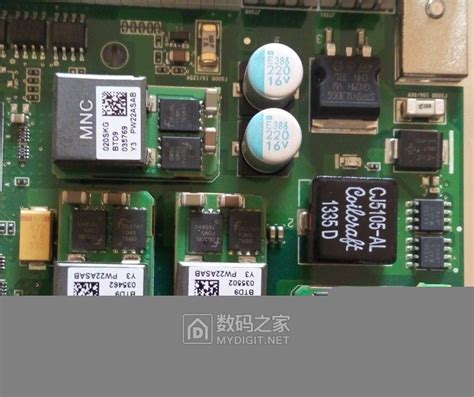
Conclusion
In summary, optimizing PWB assembly processes is crucial for manufacturers aiming to enhance overall productivity and efficiency in their operations. By incorporating innovative strategies and techniques, such as adopting automation and applying lean manufacturing principles, companies can significantly reduce waste and streamline their workflows. The integration of data analysis tools further allows for continuous improvement in PCB assembly practices, enabling businesses to stay ahead in a competitive landscape. Moreover, fostering a culture of quality control ensures that every PCBA meets the highest standards, eventually leading to improved production outcomes. As technology evolves, manufacturers must remain adaptable and proactive in implementing future trends within PWB assembly, capitalizing on advancements that promise to revolutionize the industry while driving greater success.

FAQs
Q: What is PWB assembly?
A: PWB assembly refers to the process of assembling printed wiring boards (PWBs), which are essential in connecting electronic components within devices.
Q: How does pcba differ from PCB?
A: While PCB (Printed Circuit Board) is the bare board that houses the circuitry, pcba (Printed Circuit Board Assembly) includes the board along with all components that have been mounted and soldered onto it.
Q: What are some common challenges in pwb assembly?
A: Common challenges include ensuring consistency in component placement, managing thermal and mechanical stress during assembly, and adhering to stringent quality control standards.
Q: What role does automation play in enhancing pcba efficiency?
A: Automation streamlines the production process by reducing manual errors, speeding up assembly times, and ensuring high precision during the placement of components on the PWB.
Q: How can companies implement best practices for quality control in pwb assembly?
A: Companies can adopt best practices such as regular inspections, implementing testing protocols at various assembly stages, and utilizing quality management systems to monitor performance effectively.
Q: What advantages do lean manufacturing principles bring to pcba processes?
A: Lean manufacturing principles help eliminate waste, optimize resources, and improve flow in production processes, which ultimately leads to faster turnaround times and reduced costs in PWB assembly.



